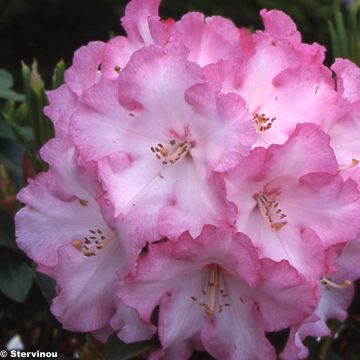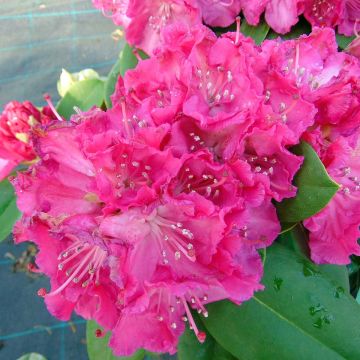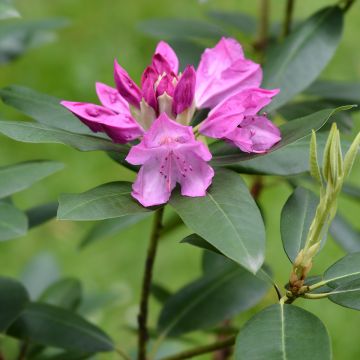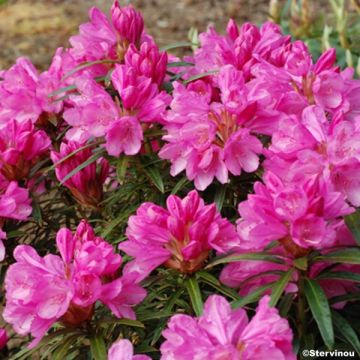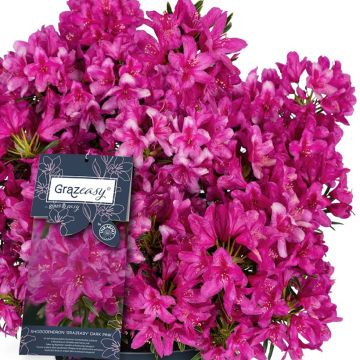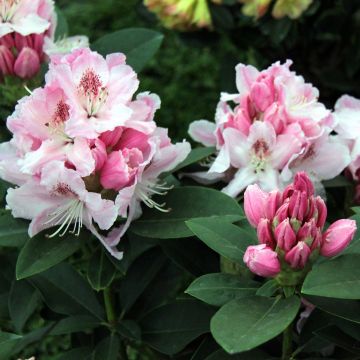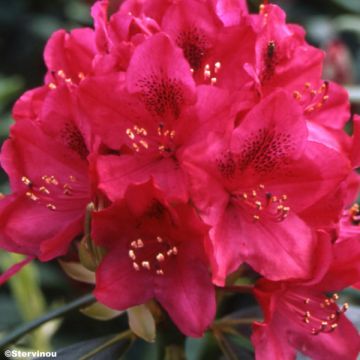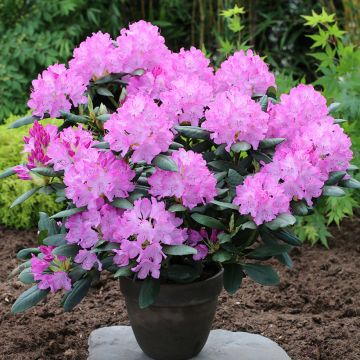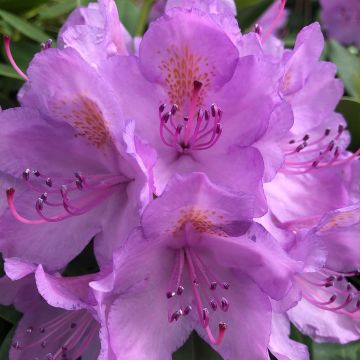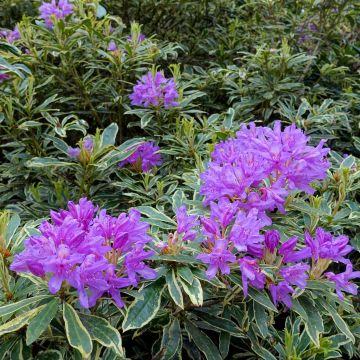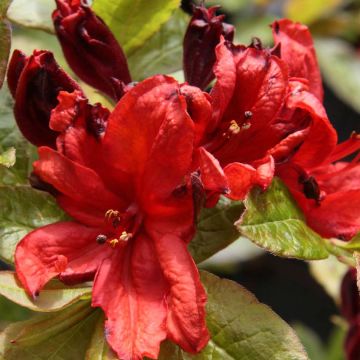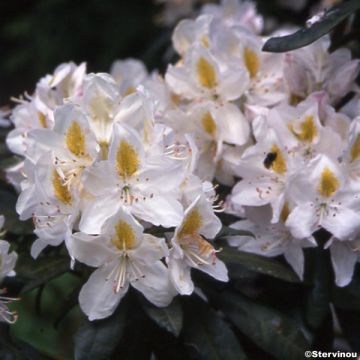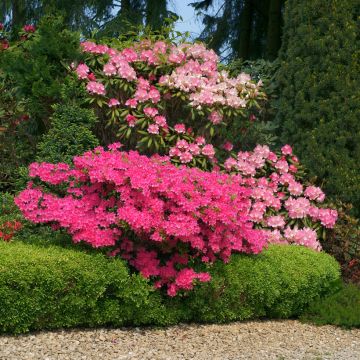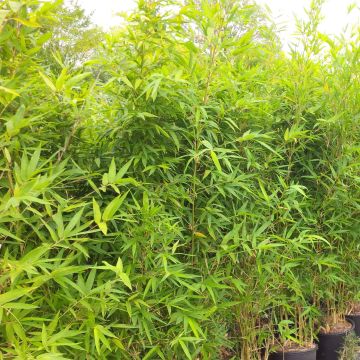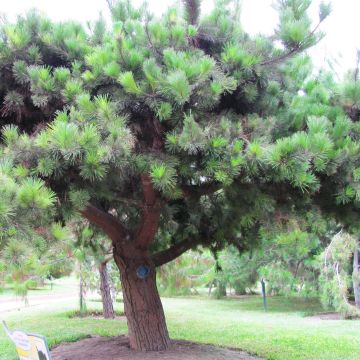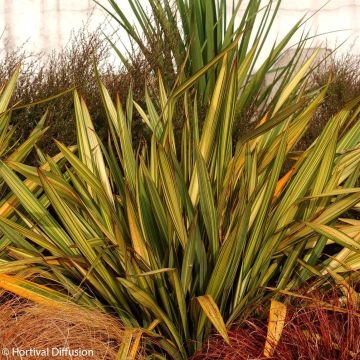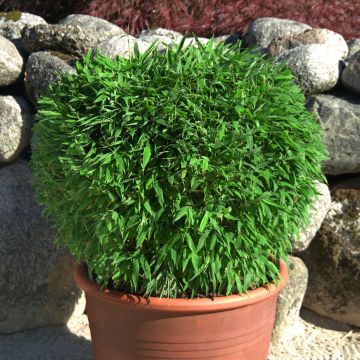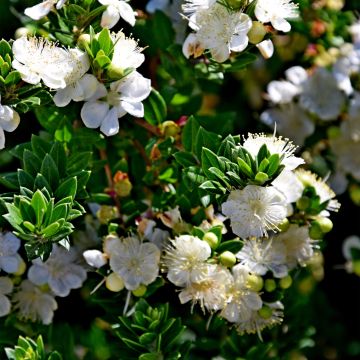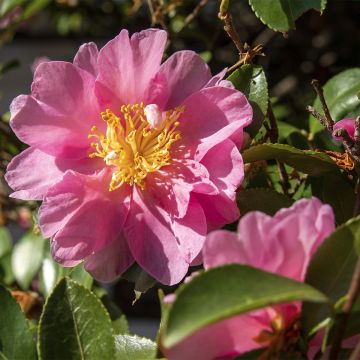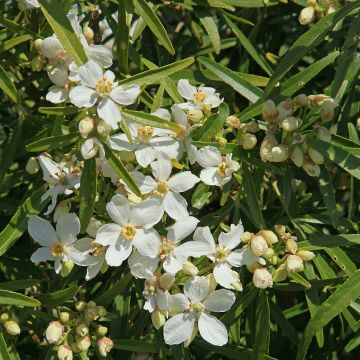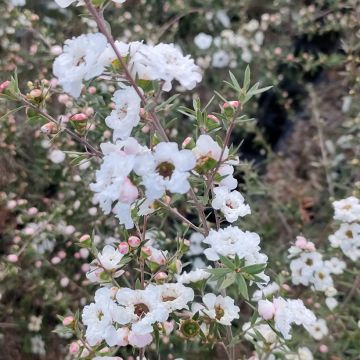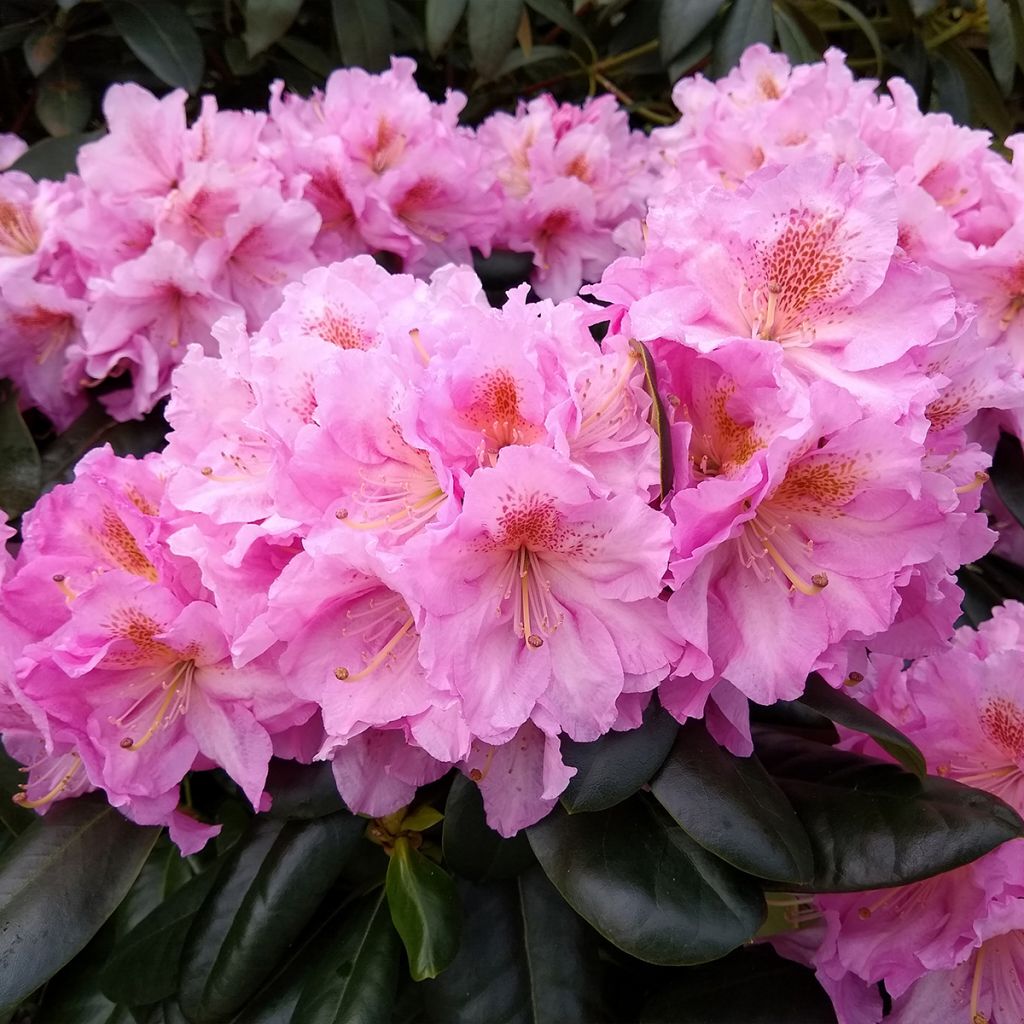

Rhododendron Scintillation
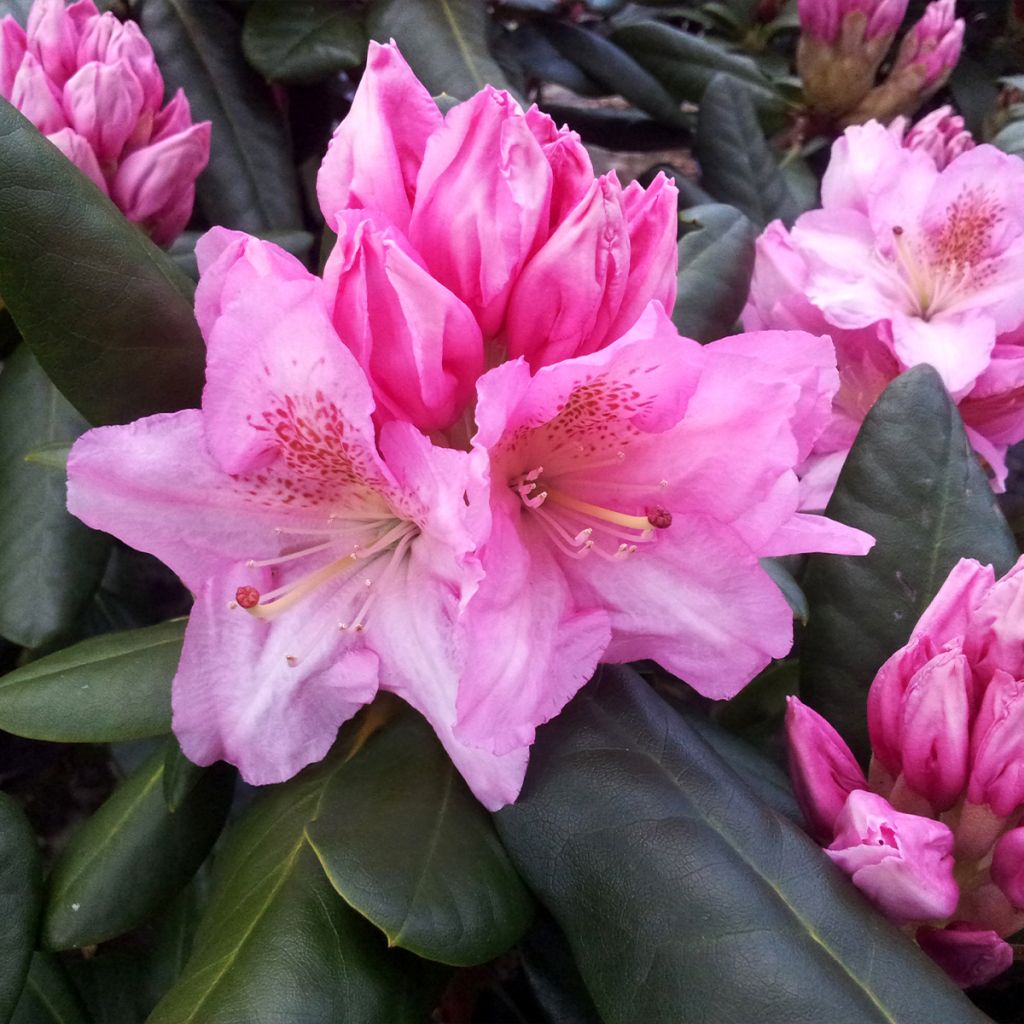

Rhododendron Scintillation
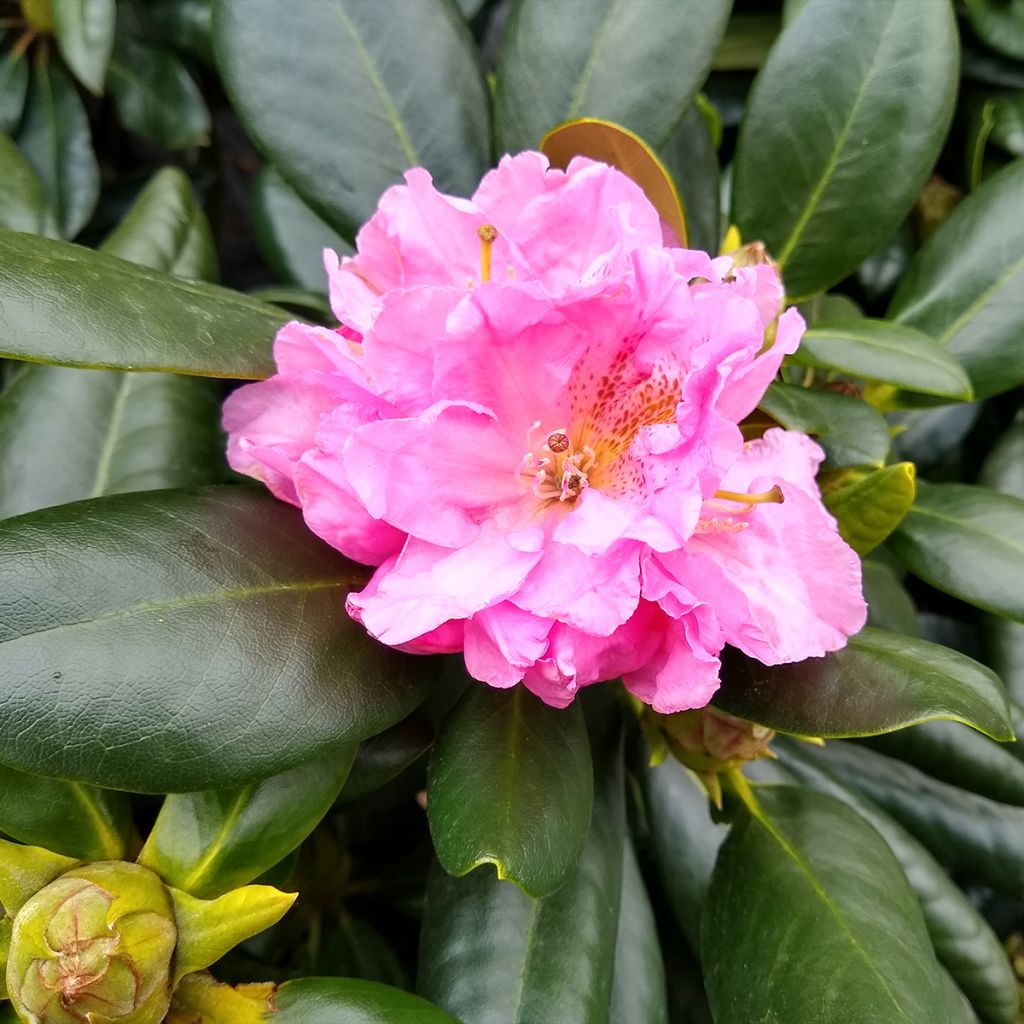

Rhododendron Scintillation
Rhododendron Scintillation
Rhododendron Scintillation
Rhododendron
Why not try an alternative variety in stock?
View all →This plant carries a 24 months recovery warranty
More information
We guarantee the quality of our plants for a full growing cycle, and will replace at our expense any plant that fails to recover under normal climatic and planting conditions.
From €7.90 for pickup delivery and €6.90 for home delivery
Express home delivery from €8.90.

Does this plant fit my garden?
Set up your Plantfit profile →
Description
Rhododendron 'Scintillation' is a highly appreciated hybrid for its massive, spectacular light pink spring flowering. It forms a rounded medium-sized bush that is suitable for gardens of all sizes, even for growing in containers on a balcony. Its large evergreen foliage, shiny dark green, offers an elegant contrast with its big pastel flowers and forms a green background all year round. Hardy and versatile, it is a plant that requires acidic, well-drained, humus-rich and moist soil, as well as partial shade exposure. It is the ideal plant for animating a shady area of undergrowth or creating an informal hedge with other rhododendrons with staggered flowering, both evergreen and blooming.
Rhododendrons are plants from the ericaceae family, just like heathers, preferring soils devoid of limestone, with an acidic tendency, and humid climates, especially when planted in full sun. 'Scintillation' is a recognized hybrid rhododendron for its beautiful light pink flowers spotted with reddish brown and has received the Award of Garden Merit and the award for the best rhododendron of the year in several regions of the United States. It naturally forms a compact bush with a rounded habit, reaching about 2m (7ft) in all directions. Its growth rate is moderate: it can grow up to 20cm (8in) per year. Its leaves, evergreen in winter, leathery, dark green with a slightly satin finish, are elliptical in shape and cover the plant well. They have a very fuzzy underside. The young shoots are a beautiful carmine red to purple. In April-May, remarkably abundant flowering submerges the bush: large corymbs of beautiful and large campanulate flowers, 6 to 7cm (2 to 3in) long, open. Their bright light pink colour with a maculated throat of reddish brown is highlighted by the shiny texture of the petals and the white tips of the stamens, like small jewels grouped at the heart of the flower.
Rhododendron 'Scintillation' is a shiny bush, very hardy down to -15°C (5°F), even -20°C, and easy to grow as long as the conditions are suitable, in terms of soil and climate. Even though they prefer partial shade exposure, hybrid rhododendrons with large flowers can tolerate the sun as long as it is not scorching and their roots remain cool. 'Scintillation', with its generous flowering, will skillfully dress up a small partially shaded area of the garden, terrace or balcony. Plant it together with ferns, blue or variegated hostas, Pieris, heathers, Kalmias, Japanese Maples, or other rhododendrons from the same group to create superb patchworks of textures and colours in spring. Growing in containers requires regular watering with non-limestone water and specific fertilizer for ericaceous plants.
Rhododendron Scintillation in pictures
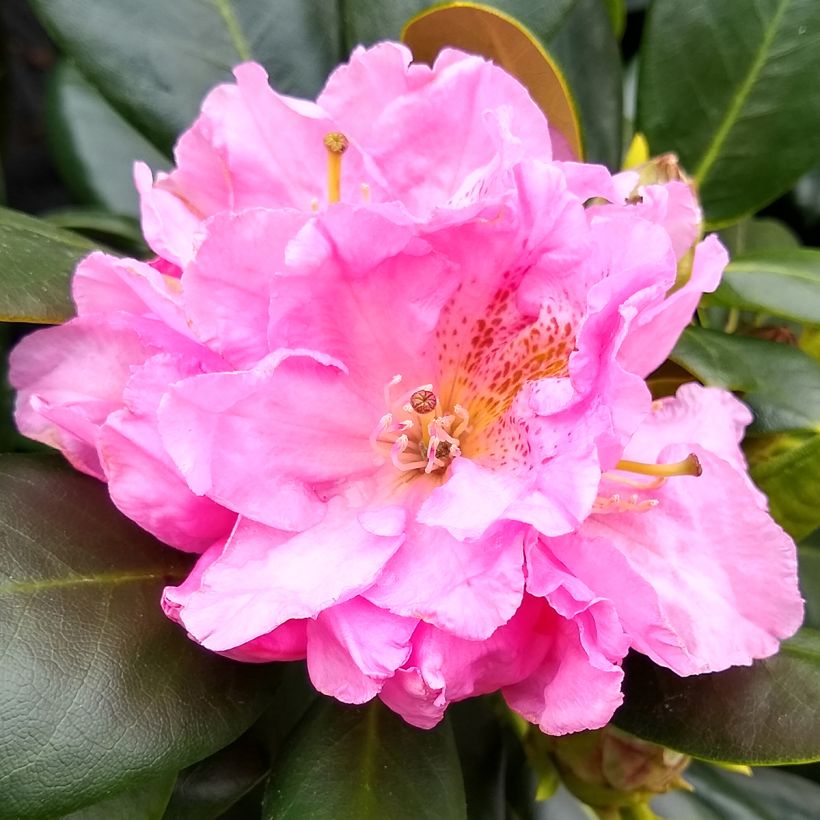

Plant habit
Flowering
Foliage
Botanical data
Rhododendron
Scintillation
Ericaceae
Rhododendron
Cultivar or hybrid
Other Large Rhododendrons
Planting and care
Plant the 'Scintillation' Rhododendron in a semi-shaded position, protected from cold and drying winds, in a moist, humus-rich, and light soil, with an acidic or neutral tendency. Like all plants of the heathland, it does not tolerate limestone soils or heavy soils saturated with water in winter. If the soil remains moist in summer, this rhododendron will also tolerate exposure to non-burning sunlight. Avoid planting at its base, as its shallow roots do not tolerate competition from other plants, especially for water resources.
Dig a hole three times larger than the pot volume. Soak the root ball in non-limestone water and plant the bush at the collar level, in a mixture composed of leaf compost, gravel or pumice, and loam. Water generously and keep the soil moist in summer. Azaleas and Rhododendrons have a shallow root system. As a result, they are sensitive to long periods of drought. That is why humus-enriched soil and abundant watering during dry periods are recommended. Moreover, this root system is not very strong, which is why it is essential to lighten heavy soils with draining materials (gravel, pumice, clay pellets) at planting. Apply a mulch of crushed pine bark at the base of the bush every spring to retain soil moisture while maintaining an acidic pH.
Maintenance consists of removing faded flowers in summer and pruning any dead branches. Azaleas and Rhododendrons can sometimes be attacked by weevils that eat the edges of leaves and rootlets, as well as the famous "rhododendron beetle" which does not often cause severe damage. Yellowing of the leaves (chlorosis) in Rhododendron indicates poor assimilation of iron from the soil and can result in premature plant death. While limestone is often the cause, poorly drained soil or a deeply planted root ball can also explain the phenomenon.
"Rhodos" reach their full potential in cooler climates when planted in soil devoid of limestone and in a humid environment. Their cultivation in warmer and drier climates is generally doomed to failure in the long run, despite all attempts to acclimatize them.
Planting period
Intended location
Care
This item has not been reviewed yet - be the first to leave a review about it.
Evergreen shrubs
Haven't found what you were looking for?
Hardiness is the lowest winter temperature a plant can endure without suffering serious damage or even dying. However, hardiness is affected by location (a sheltered area, such as a patio), protection (winter cover) and soil type (hardiness is improved by well-drained soil).

Photo Sharing Terms & Conditions
In order to encourage gardeners to interact and share their experiences, Promesse de fleurs offers various media enabling content to be uploaded onto its Site - in particular via the ‘Photo sharing’ module.
The User agrees to refrain from:
- Posting any content that is illegal, prejudicial, insulting, racist, inciteful to hatred, revisionist, contrary to public decency, that infringes on privacy or on the privacy rights of third parties, in particular the publicity rights of persons and goods, intellectual property rights, or the right to privacy.
- Submitting content on behalf of a third party;
- Impersonate the identity of a third party and/or publish any personal information about a third party;
In general, the User undertakes to refrain from any unethical behaviour.
All Content (in particular text, comments, files, images, photos, videos, creative works, etc.), which may be subject to property or intellectual property rights, image or other private rights, shall remain the property of the User, subject to the limited rights granted by the terms of the licence granted by Promesse de fleurs as stated below. Users are at liberty to publish or not to publish such Content on the Site, notably via the ‘Photo Sharing’ facility, and accept that this Content shall be made public and freely accessible, notably on the Internet.
Users further acknowledge, undertake to have ,and guarantee that they hold all necessary rights and permissions to publish such material on the Site, in particular with regard to the legislation in force pertaining to any privacy, property, intellectual property, image, or contractual rights, or rights of any other nature. By publishing such Content on the Site, Users acknowledge accepting full liability as publishers of the Content within the meaning of the law, and grant Promesse de fleurs, free of charge, an inclusive, worldwide licence for the said Content for the entire duration of its publication, including all reproduction, representation, up/downloading, displaying, performing, transmission, and storage rights.
Users also grant permission for their name to be linked to the Content and accept that this link may not always be made available.
By engaging in posting material, Users consent to their Content becoming automatically accessible on the Internet, in particular on other sites and/or blogs and/or web pages of the Promesse de fleurs site, including in particular social pages and the Promesse de fleurs catalogue.
Users may secure the removal of entrusted content free of charge by issuing a simple request via our contact form.

































